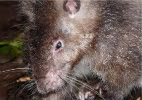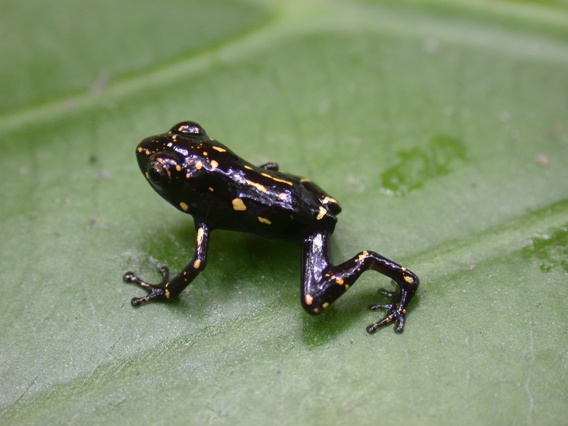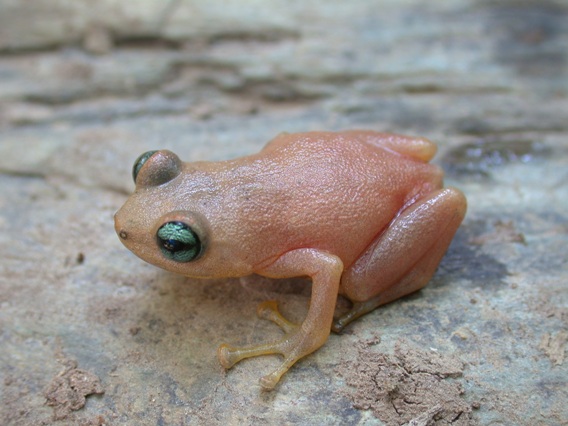Nature never runs out of surprises. Exploring Sudest Island off of Papua New Guinea, researchers discovered a new species of frog that drastically changes its appearance from juvenile to adulthood, a transformation that has never been seen in another frog.
The new species, named Oreophryne ezra, is shiny black with bright yellow spots. Yet when it matures, the frog becomes rose-colored and even its eyes change from black to blue (photos below).
“No other such instance is known in frogs,” Dr. Fred Kraus, one of the frog’s discoverers and herpetologist with the Bishop Museum in Hawaii, told the BBC.
The discovery, published in Copeia, has led Kraus and co-author Allen Allison also of the Bishop Museum, to speculate that in its juvenile-stage the frog may be advertising that it is poisonous, since it resembles a poison-dart frog. Yet, why the frog would then change appearances so drastically on reaching adult is puzzling to say the least. The researchers have yet to test the new species to see if it is in fact poisonous.
The species, endemic to Sudest Island, is not without potential threats.
“The new species is restricted to a relatively small patch of cloud forest perched on the highest peak of Sudest Island,” the researchers write. “Climate change may pose a threat to the new species if changing rainfall or temperature regimes result in the loss of this forest.”
Citation: Fred Kraus, Allen Allison. A Remarkable Ontogenetic Change in Color Pattern in a New Species of Oreophryne (Anura: Microhylidae) from Papua New Guinea. Copeia, Volume 2009, Issue 4 (December 2009).
Juvenile Oreophryne ezra. Photo by: Fred Kraus.
Adult Oreophryne ezra. Photo by: Fred Kraus.
Related articles
Photos: expedition in Ecuador reveals numerous new species in threatened cloud forest

(01/14/2010) An expedition into rainforests on Ecuador’s coast by Reptile & Amphibian Ecology International (RAEI) have revealed a number of possible new species including a blunt-snouted, slug-eating snake; four stick insects; and up to 30 new ‘rain’ frogs. The blunt-snouted snake, which feeds on gastropods like slugs, is especially interesting, as its closest relative is in Peru, 350 miles away. In addition, a fifteen-year-old volunteer with the organization found a snake that specializes on snails. The researchers are unsure of this is a new species: the closest similar snake is 600 miles away in Panama.
New species everywhere in Papua New Guinea’s ‘lost’ volcano

(09/07/2009) A five week expedition into a remote extinct volcano has uncovered a treasure trove of new species in Papua New Guinea, including what may be the world’s largest rat, a fanged frog, and a grunting fish. In all the expedition estimates it may have found around forty species unknown to science. The expedition was undertaken by a BBC film crew and scientists in January. Local trackers led them into the unexplored jungle, hidden beneath the Bosavi volcano’s 2,800 meter summit. Six months prior to arrival, fields of spinach and sweet potato were planted to feed the expedition in such a remote area.
Photos: hundreds of new species discovered in Himalayan region, threatened by climate change

(08/10/2009) Scientists from a variety of organizations have found over 350 new species in the Eastern Himalayas, including a flying frog, the world’s smallest deer, and a gecko which has walked the earth for 100-million-years, according to a new report by the World Wildlife Fund (WWF). The report, entitled Where World’s Collide, warns that these rare biological treasures, as well as numerous other species, are threatened in the Eastern Himalayas by climate change.

